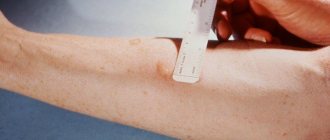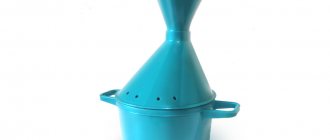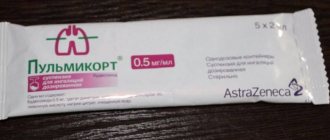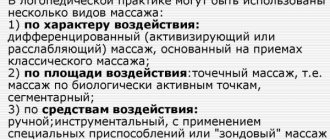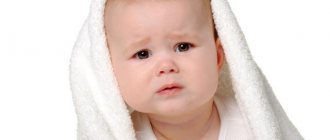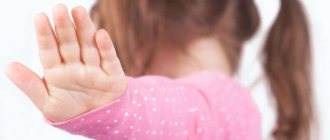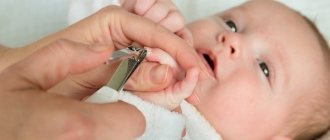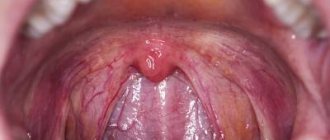Effect of inhalation on the body when coughing
Inhalation is the inhalation of a drug in the form of vapor or aerosol. It is widely used to treat acute and chronic respiratory diseases that cause nasal congestion, cough, and sore throat.
These include:
- angina;
- acute respiratory infections;
- rhinitis;
- laryngitis;
- pharyngitis;
- bronchitis (acute and chronic);
- pneumonia (when the acute period has passed).
Unlike other types of treatment (tablets, injections), during inhalation, the active substances contained in the drugs enter directly into the respiratory tract, bypassing the gastrointestinal tract and circulatory system, due to which they “work” only where needed and provide a pronounced and rapid therapeutic effect. Effect.
Other advantages of this procedure include:
- safety;
Cough inhalation at home is good because it is painless and safe, as well as being effective. - painlessness;
- no negative consequences.
Inhalations are especially effective for diseases that cause a prolonged, debilitating cough, since they can:
- quickly relieve irritation, which is its main cause;
- contribute to the liquefaction of sputum and its subsequent removal from the body;
- alleviate the patient’s condition by softening and moistening the respiratory tract;
- cleanse the bronchi and trachea of dust particles, pathogens and their metabolic products and, thereby, speed up recovery.
Types of drugs for inhalation
Each disease requires a suitable solution. For a runny nose or allergic cough, these will be different medications. Their choice is agreed with the doctor. You cannot carry out inhalations only at your own request.
There are ready-made preparations that are already diluted with saline in the required proportions. Their ampoules just need to be added to the nebulizer. Some you need to cook yourself. To do this, you must carefully follow the dosage drop by drop. Since, when inhaled, medicinal substances are quickly absorbed, an overdose or an acute allergic reaction with all the ensuing side effects may occur.
Classification of drugs
- Bronchodilators.
The action is based on reducing spasm in the bronchi. This phenomenon is observed in bronchial asthma. Inhalations with a portable nebulizer are vital for people suffering from this disease. With the help of these remedies, the condition of obstructive pulmonary disease and allergic cough is also alleviated.
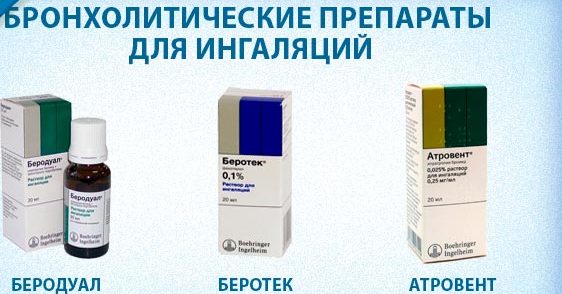
- Mucolytics or expectorants
Helps against the accumulation of mucus in the respiratory tract. It accumulates, causing a painful cough and causing discomfort. The active ingredients thin the mucus and it leaves the lungs, relieving symptoms. Used for both wet and dry coughs. Mucolytics should be used with caution with other drugs. There are those that are incompatible with antibiotics. Before use, you should consult your doctor or carefully study the instructions for use.
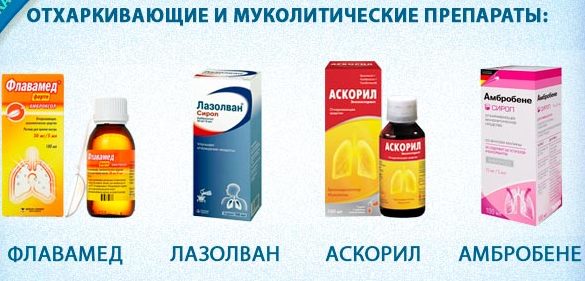
- Anti-inflammatory drugs
They reduce inflammation, swelling and discomfort in viral diseases. A solution with furatsilin has an antiseptic effect. For one application, 4 ml of solution is enough. The procedure should be used no more than 2 times a day.
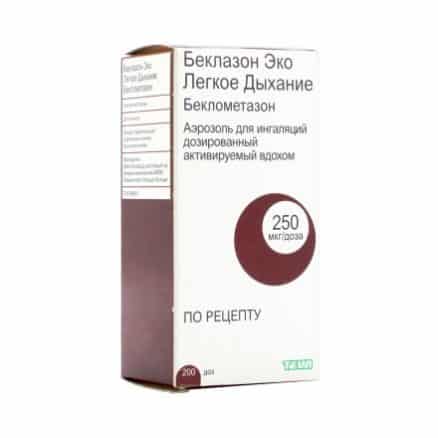
- Antibiotics.
They can be used only as prescribed by the attending physician. Effective against bacterial infections. Completely useless for viral infections. To prescribe antibiotics to a patient, the doctor must make a clear diagnosis in order to understand the viral or bacterial origin of the disease.
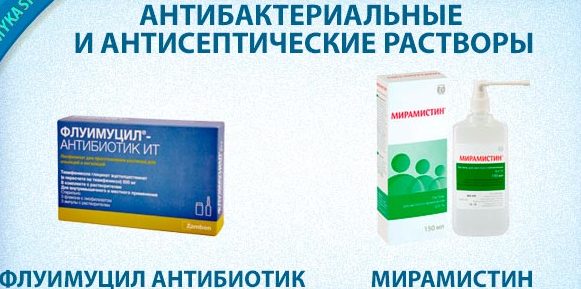
- Immunomodulators
These are substances that have an effect on viruses. Can be used for the prevention and treatment of viral diseases, including influenza.
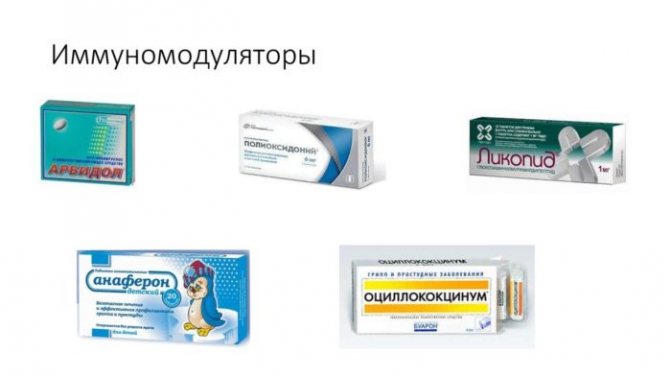
- Antiallergic drugs.
They quickly have an antihistamine effect. Their action is based on blocking contact of the allergen with the receptor. Allergic reactions in the form of a runny nose, sneezing, and nasal congestion pass quickly. This group also includes hormonal drugs and corticosteroids.
What inhalations are used for dry, wet cough in children
The young age of the patient imposes additional requirements for inhalation: its duration should not exceed 5-7 minutes, then the baby must be immediately put to bed.
It is important to prepare the baby psychologically for the upcoming procedure so that the child remains calm and performs all the necessary actions with pleasure. Before starting treatment, a consultation with a pediatrician is necessary, since not all drugs used for the procedure are suitable for children.
For children over 1.5-2 years old, the following types of inhalations are acceptable:
- steam, in which the effect is achieved by inhaling steam formed by boiling water with a medicine dissolved in it;
- using a nebulizer - a device that turns liquid into a fine suspension.
For children under 2 years of age, it is recommended to replace steam inhalations with a nebulizer, since under the influence of steam, sputum dilutes and significantly increases in volume. When a child does not yet know how to clear the airways from accumulated mucus (blow his nose, expectorate, cough), this often leads to a worsening of the condition.
The use of a nebulizer does not require heating water to high temperatures, therefore, there is no danger of burns, which is possible with steam procedures, given the restlessness of the little patient.
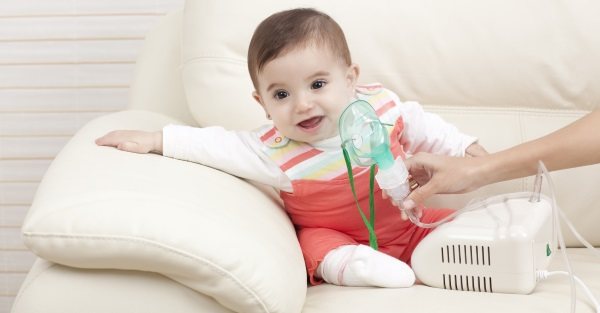
Both types of inhalations are applicable for dry and wet cough, but the purposes of the procedures are different. In the first case, it is necessary to transform a dry cough into a wet one, relieve irritation, accelerate the formation of sputum, and in the second, to initiate the process of its discharge and removal.
Cough inhalations at home, depending on the strength and frequency of attacks, require the use of different dosage forms for treatment:
| Type of cough | Type of drugs | Names of drugs |
| Dry | Drugs that soothe a sore throat and help thin and remove mucus from the bronchi and lungs |
|
| Wet | Improving sputum discharge and expectorants |
|
Steam inhalation at home
Steam inhalations are used to treat mild colds that affect only the upper respiratory tract. Steam is not able to penetrate lower into the bronchi and lungs due to the large size of its elements.
The procedure will help with:
- initial stages of ARVI;
- catarrh of the upper respiratory tract;
- laryngitis;
- runny nose.
When choosing a drug, you should be careful: not all of them can be used in steam procedures. A simple “device” for steam inhalation is a basin of hot water to which medicinal herbs have been added, but it is only suitable for treating school-age children: children are not yet careful enough and can get burned.
A more advanced device is a kettle, with a funnel inserted into the spout, which allows you to cool the steam to the required values (for a child - about 40 ° C). The younger the child, the wider the funnel should be. However, it is best to use a steam inhaler as the most convenient and safe device
There are 2 varieties of it:
- A device with a ceramic water heater that provides a stable steam temperature of 45° C, which is mixed with the medicine and supplied to the patient through a special tube.
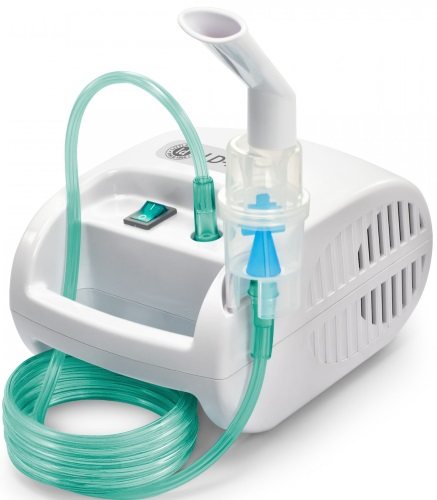
- A device consisting of 2 containers inserted into one. The outer one plays the role of a thermos, the inner one is filled with water and medicine. Next, the device is closed with a lid connected to the face mask.
Inhalation using a nebulizer
Compared to a steam inhaler, a nebulizer is a more functional device. With its help, the liquid turns into a tiny suspension that can penetrate the bronchi and lungs, so this type of inhaler can be used to treat bronchitis, pneumonia, and alleviate the condition of patients with asthma and tuberculosis.
Many nebulizers have the ability to select the degree of dispersion: that is, the particle size of the resulting aerosol: the smaller it is, the deeper the active substances can penetrate.
The ratio of dispersion and area of influence of the drug is as follows:
| Suspension particle size (µm) | Area of influence |
| More than 10 | Pharynx, nasopharynx |
| 5-10 | Larynx, upper trachea |
| 2-5 | Lower parts of trachea, bronchi |
| 0,5-2 | Alveoli of the lungs |
Failure to comply with the dispersion requirements can make the mixture useless and even lead to complications of the disease: for example, essential oils are good for treating a runny nose, but when they get into the lungs, they cause severe coughing attacks.
Other advantages of a nebulizer compared to steam inhalation include the low temperature of the mixture, the absence of the danger of burns, and the possibility of using a nebulizer to treat children in the first year of life.
The following types of devices are mainly used:
- ultrasonic nebulizer . Among the advantages are silent operation and small size. At the same time, the use of a device of this type greatly limits the possibility of choosing medications: oils, herbal infusions, products based on antibiotics and hormones are prohibited;
- A compressor nebulizer cannot boast of being miniature and silent, but it is capable of creating an aerosol from any liquid and performing treatment with antibiotics, immunostimulants, herbs, and mineral water.
Any type of nebalizer allows you to inhale not only one, but also several medications, which makes treatment even more effective.
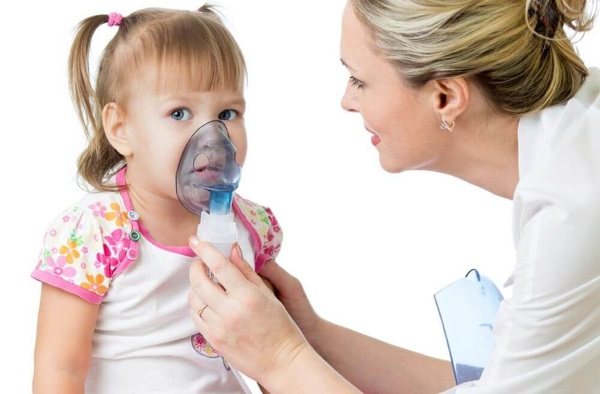
The following sequence of actions is recommended:
| № | Type of procedure | Approximate list of possible drugs |
| 1 | Inhalation of drugs that provide a bronchodilator effect | Saline solution, mineral water |
| 2 | Break of 20 minutes | |
| 3 | The use of mucus thinners | Lazolvan (2 ml) + saline (2 ml) |
| 4 | Break of 30 minutes | |
| 5 | Use of anti-inflammatory drugs | Rotocan (5 ml) |
| 6 | Inhalation using immunomodulating agents | Interferon (2 ml) |
Glucocorticosteroids and antibiotics
Here, too, I do not give detailed instructions; if necessary, your attending physician will explain everything to you. I'll just list the drugs.
- pulmicort;
- dexamethasone;
- fluimicil;
- dioxidine;
- Furacilin.
Attention! Self-medication is always dangerous for your health, but especially in the case of inhalation with a nebulizer, because the direct effect of drugs on the body is enhanced.
Maybe you have successful experience using a nebulizer to treat coughs and runny noses? Share with our readers in the comments!
Article Rating
